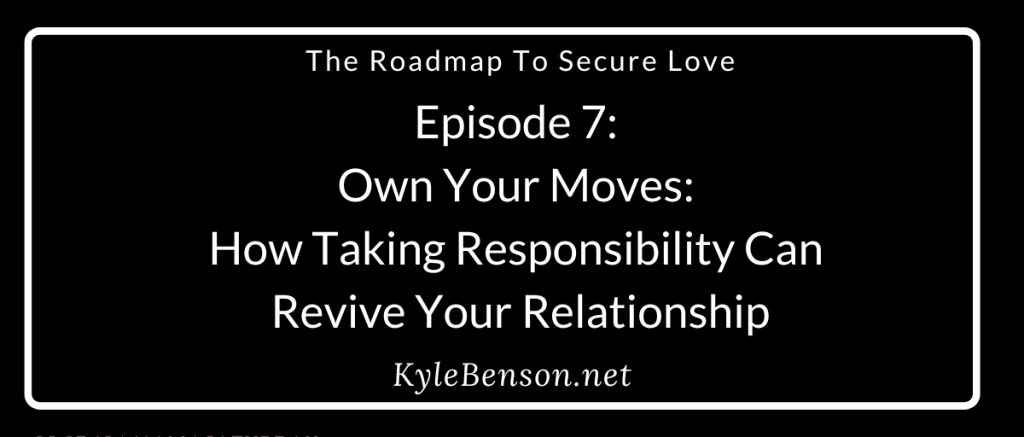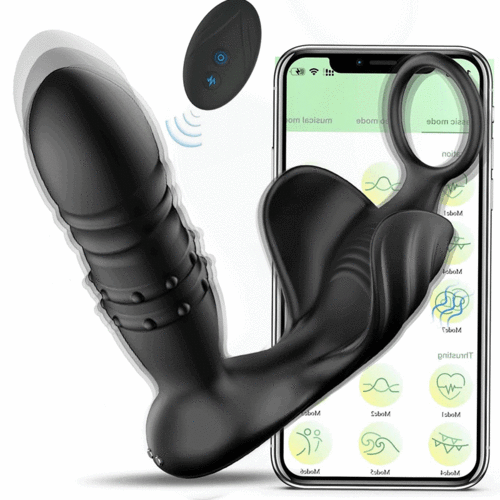
Vulnerability in relationships is difficult to handle. In insecure relationships, the unfairness and instability we experienced with our attachment figures in the past motivates us to adapt strategies to stay secure in our close relationships. The relationship clients sitting across from me who struggle with insecurity often have protective strategies that have worked in the past but, paradoxically, interfere with their attachment needs in the present. This is how negative cycles occur.
The most effective way to transform a negative cycle into a more secure relationship is to take ownership of your own actions during the cycle, rather than your partner. This approach requires individuals to take responsibility for their own actions, intentions, and role in the relationship dynamic, especially during times of conflict. Acknowledging behaviors such as withdrawing or defensive reactions, for example, can open the door to understanding why these behaviors occur, how they damage the relationship, and how to do things differently so that the relationship is more likely to meet our needs. Let’s dive in.
“Sometimes our attachment guards make it difficult for us to feel loved and connected”
Kyle Benson
Differentiate between protection and connectivity strategies
This episode describes
- Protection strategy — Defenses used to protect us from emotional pain in relationships. These are learned strategies that came into play at some point in our lives.
- Connection strategy – Aims to meet unmet needs in conservation strategies by promoting closeness and understanding.
Protective strategies may relieve discomfort in the short term, but often hinder attachment security and deeper connection in the long term. Connective strategies, in contrast, promote healing and solidarity.


Breaking out of the cycle of mutual blame
Blame is a common trap in many relationships, leading to a cycle of accusations and resentment that erodes love and trust. It is critical to move beyond blame and explore the underlying dynamics of attachment intentions, fears, and needs that drive blaming behaviors. This requires a shift from viewing conflict as a personal failure or flaw to understanding it as an opportunity for growth and vulnerability. After all, vulnerability in relationships allows us to get to the heart of the matter.
For example, instead of blaming the other for pulling away from them, one partner might express how this pulling away makes them feel unloved and afraid of losing the relationship. Instead of getting defensive, the other partner might share how their withdrawal is a response to feeling overwhelmed and inadequate. By acknowledging these underlying emotions and needs, they create a space for vulnerability and empathy to transform their conflict into an opportunity for growth and a more secure relationship. This shift helps them view conflict as an opportunity to support each other and build a closer, more secure relationship, rather than as a personal failure.
The Importance of Vulnerability in Relationships
“Love is about being vulnerable, about giving your heart to someone and saying, ‘I know this might be painful, but I’m willing to be vulnerable and love you.’
Brene Brown
For example, in one session, John and Sarah decided to take action and do something different. In heated arguments, John would usually blame Sarah for not spending enough time with him, which made him feel unloved. Instead of blaming her, John said, “I want to blame you, but I know that will make you close off, and I don’t want that. This is my situation. When you spend so much time at work, I feel lonely and afraid that I’m not important to you.”
Sarah would normally respond defensively, but she took a deep breath and said, “That makes sense, and I want to defend myself, but I know it makes you feel alone. I don’t want that for you. I’m focused on my work because I’m worried about providing for us, and I’m worried that if I’m not successful, I’ll let you down.”
By taking control of their feelings and behaviors, John and Sarah allowed themselves to share and understand their own vulnerabilities. This emotional risk took off their protective armor and allowed each other to see their soft, vulnerable hearts. Sarah now understood that John’s loneliness was not because she ignored him, but because he was afraid of not being loved. John viewed Sarah’s dedication to her work as her way of ensuring that she was a good person in his eyes, not a disregard for their relationship. This vulnerability in the relationship fostered empathy and laid the foundation for handling and resolving this conflict in a different way, ultimately deepening their attachment.
Bypass Initiative: From Protection to Connection
One of the key things Kim and I discuss in this episode is something called a “detour.” Detours can help our partners see that we want to do things differently and share our needs for vulnerability.
Here is a roadmap on how to achieve this:
- Take control of your behavior by expressing your desire to take protective measures
- Talk about the impact your protective behavior has on your partner
- Share what you wish was different
- Accepting vulnerability by sharing attachment needs or desires for protective behaviors
- Example of a detour: “I want to speak up and be heard, but I know that makes you want to shut up. Can we do this another way? I want to be heard, and I want you to know that you matter.”
- Withdrawal Detour Example: “I want to leave, but I know it will make you feel lost. I don’t want that. Can we go another way? I want to know that I matter to you, and I want to know that you matter to me.”
Emotional triggers, past traumas, and deep-seated protectiveness can make open communication difficult. By taking advantage of detour moments, we can build connection and safety in our relationships.
For more insights on enhancing your relationships through attachment theory, stay tuned for A Roadmap to Secure Love. Let’s continue to grow, learn, and connect, episode by episode.
Listen to previous episodes:
FAQ: Exploring Vulnerability in Relationships
1. Why is vulnerability important in relationships?
Vulnerability is essential in relationships because it allows partners to connect on a deeper emotional level, fostering empathy, trust, and intimacy. It helps partners understand each other’s needs and fears, leading to safer, more fulfilling relationships.
2. What are some protective strategies in interpersonal relationships?
Protection strategies are defensive behaviors developed to avoid emotional pain and maintain security in relationships. These strategies, such as withdrawing or becoming defensive, often get in the way of deeper connection and attachment security.
3. What are some strategies for connecting in interpersonal relationships?
Connecting strategies aim to fill unmet needs in protective strategies by promoting intimacy and understanding. They promote healing, solidarity, and a stronger emotional bond between partners.
4. How can a couple avoid blaming each other?
Couples can move beyond a situation of blaming each other by shifting their focus from blaming each other to understanding each other’s deeper attachment needs and fears. By taking ownership of their own behavior and expressing their vulnerabilities, they create space for empathy and constructive conflict resolution.
5. What does it mean to “take charge of your actions” in a relationship?
Taking ownership of your behavior means taking responsibility for your actions, the impact on your partner, and your role in the relationship dynamic. It involves acknowledging your own actions and emotions, thereby fostering openness and vulnerability.
6. How can understanding underlying emotions help resolve conflict?
Understanding underlying emotions helps partners understand the root causes of their behaviors and reactions. This awareness allows them to address these issues constructively, leading to more effective conflict resolution and stronger emotional connections.
7. Can you give an example of a couple showing vulnerability?
Yes, for example, instead of blaming Sarah for pulling away from him, John shared that her absence made him feel lonely and scared. Instead of getting defensive, Sarah explained that her focus on work was driven by a fear of inadequacy. By sharing these vulnerabilities, they developed empathy and understanding, strengthening their connection.
8. What are some of the circumvention behaviors in interpersonal communication?
Circumvention is a strategy where partners acknowledge their protective behaviors, express a desire to change, and share their need for vulnerability. This approach helps move away from protection and toward connection, fostering healthier, more open communication.
9. How can couples practice the circumambulation movement?
Couples can practice bypassing by taking ownership of their protective behaviors, pointing out their impacts, expressing a desire to change, and embracing vulnerability. For example, say, “I want to speak louder so you can hear me, but I know it will shut you up. Can we do it another way?”
10. What challenges might couples face when expressing vulnerability?
Couples may face challenges such as emotional triggers, past traumas, and deeply ingrained protective behaviors. These factors can make open and honest communication difficult. However, with practice and support, couples can overcome these obstacles and build stronger connections.
11. What benefits does shifting from protection to connection have on a relationship?
Shifting from protection to connection facilitates the development of deeper levels of empathy, trust, and intimacy. It allows partners to address their underlying needs and fears in constructive ways, leading to safer, more fulfilling relationships.
12. How can individuals begin to incorporate these strategies into their relationships?
Individuals can begin by acknowledging their own protective behaviors, expressing their own vulnerabilities, and actively listening to their partner’s needs and fears. Seeking support from a therapist can also help guide this process and establish a healthier relationship dynamic.


 Anal Beads
Anal Beads Anal Vibrators
Anal Vibrators Butt Plugs
Butt Plugs Prostate Massagers
Prostate Massagers
 Alien Dildos
Alien Dildos Realistic Dildos
Realistic Dildos
 Kegel Exercisers & Balls
Kegel Exercisers & Balls Classic Vibrating Eggs
Classic Vibrating Eggs Remote Vibrating Eggs
Remote Vibrating Eggs Vibrating Bullets
Vibrating Bullets
 Bullet Vibrators
Bullet Vibrators Classic Vibrators
Classic Vibrators Clitoral Vibrators
Clitoral Vibrators G-Spot Vibrators
G-Spot Vibrators Massage Wand Vibrators
Massage Wand Vibrators Rabbit Vibrators
Rabbit Vibrators Remote Vibrators
Remote Vibrators
 Pocket Stroker & Pussy Masturbators
Pocket Stroker & Pussy Masturbators Vibrating Masturbators
Vibrating Masturbators
 Cock Rings
Cock Rings Penis Pumps
Penis Pumps
 Wearable Vibrators
Wearable Vibrators Blindfolds, Masks & Gags
Blindfolds, Masks & Gags Bondage Kits
Bondage Kits Bondage Wear & Fetish Clothing
Bondage Wear & Fetish Clothing Restraints & Handcuffs
Restraints & Handcuffs Sex Swings
Sex Swings Ticklers, Paddles & Whips
Ticklers, Paddles & Whips

















